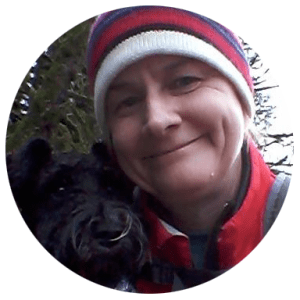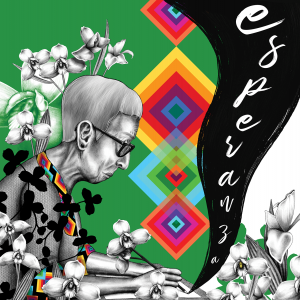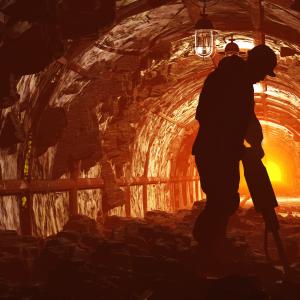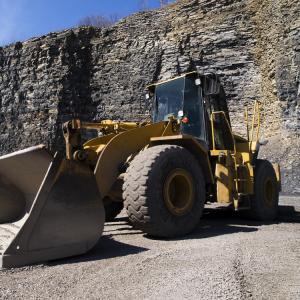
Emilie Teresa Smith is a Canadian Anglican priest and theologian living in Vancouver, British Columbia. She is co-president of the Óscar Romero International Network in Solidarity with the Peoples of Latin America.
Posts By This Author
Gustavo Gutiérrez Articulated a Collaborative, Liberating Theology
Gutierrez had systematized a living, collaborative, community movement in his ground-breaking work, A Theology of Liberation, published in 1971 in Spanish and two years later in English. Over decades, clerics and community leaders, men and women, across cultures, identities, and denominations, all had contributed, in the smallest way, to the construction of this new way of thinking about — and acting toward — God and God’s glorious creation.
The Stubborn Witness of a Revolutionary Poet
I MET JULIA ESQUIVEL for the first time in Mexico City, on a rainy afternoon more than 30 years ago, after my 2-year-old son, Abraham, and I crossed the exasperating metropolis by bus and clanky train. Flustered and dripping, I knocked on the door of her tidy home. Esquivel lived in exile, far from her beloved homeland, Guatemala. Henchmen in the service of Guatemala’s military rulers had pursued her relentlessly until at last she fled. I, a young, earnest Canadian, was traveling the northern continent, from Montreal to Costa Rica, preparing to write a book, recording the voices of women—such as Esquivel—scattered in this Guatemalan diaspora.
Esquivel was slender and small, silver hair framing her delicate, elegant face. She ushered us into her house, where we sat on cushions on the floor, drank hot tea, and read stories about St. Francis and a very bad wolf. We talked while Abraham toddled around, and we prayed. That was Esquivel: determined to pray through hurricanes, from the unimaginably large to the very small.
Our friendship spanned the decades. She was to become one of my greatest teachers. Because of Esquivel, who passed away last July, I—raised in a radically atheist household—am now a Christian. Esquivel first cracked open faith for me, showing my young rebellious self that the strongest power for transformation, for individuals as well as nations, came from a place of stubborn grace, a grace, like hers, that never surrendered.
The way a country treats its children
JULIA ESQUIVEL WAS born in 1930, in the western highlands of Guatemala, to a middle-class, progressive family. She was a surprise daughter to an older couple who had been told they would never have children. She grew up treasured. At 7, she said, she found herself before an image of Jesus on the cross; her heart broke with compassion for his suffering.
In 1947, Esquivel became a teacher, and several years later she traveled to Costa Rica to study theology. For a while, she tried on the idea of becoming a minister—first in the Presbyterian Church. She quickly found that the church refused to ordain women. From that time forward, she considered herself a Christian without a particular denomination; she called every imperfect church her home. She worshipped with Mennonites, Episcopalians, and Catholics.
Like people in any family, she quarreled with her siblings: other church members and, particularly, leaders. Young and filled with passion, she actually expected the widows and orphans to be cared for and the poor to be attended to with compassion. She believed this concrete truth: Jesus Christ made room for everyone at the table, starting with those who had been rejected by the world. Time and time again, she clashed with polite church institutions that did not embody what she believed were gospel values: inclusion, justice, the sharing of goods and gifts. Early in her young adulthood, Esquivel decided she would never marry, saying that even a good marriage would have stifled her.
Amazonians to the Church: Not Everything Is For Sale
IN OCTOBER, POPE FRANCIS convened hundreds of people in Rome to discuss the Indigenous face of the church in the Amazon. The three-week, multitrack meetings, which included lay leaders, members of religious communities, priests, expert witnesses, bishops, cardinals, and leaders of Indigenous organizations, was the result of a two-year listening process during which more than 65,000 people in the Amazonia region were asked: What are the most pressing issues you face?
The agenda used for the synod of bishops at the Vatican, as well as the wide variety of interconnected parallel gatherings around the city—under the umbrella of “The Amazon: Common Home” (la Casa Comun)—outlined the collected wisdom: Listen to the voice of Amazonia. Pursue ecological conversion. Support the prophetic Indigenous church.
One parallel gathering met in the Church of Santa Maria in Traspontina, a 10-minute walk from St. Peter’s Basilica. Hundreds of Amazonian Indigenous leaders and guests met at Santa Maria to pray, listen, and conceive a new world—one that celebrates the eternal truth of the proclamation of Jesus Christ: We are all loved. We all belong. All creation is deeply connected.
The Legacy of Liberation Theology
"THE CRY OF THE POOR rises to the heavens!” With one phrase, proclaimed at a conference of Catholic bishops in Medellín, Colombia, in 1968, history changed in Latin America.
Fifty years ago, the “princes of the church”—with the support of Pope Paul VI, who opened the gathering, and embodying the renewal of Vatican II—agreed to dethrone themselves. A “preferential option for the poor,” they said, would lead the renewed Catholic Church.
Bishops and priests, religious sisters and brothers, began working to change the historic structures of inequality and abuse that had existed in Latin America since the 15th-century invasion of the rapacious Spaniards. Faith was no longer held captive by the educated and powerful elites; now laypeople were empowered to make their faith their very own bread and Word. Christian base communities emerged. Theologians got busy listening “from below.”
A name was attached to the Medellín movement with the arrival of Father Gustavo Gutierrez’ groundbreaking book A Theology of Liberation. Liberation theology, rooted in the economically and politically oppressed, became the first modern theological movement to emerge in the Catholic Church outside of Europe.
Canada's Shameful Exports
CANADIAN MINING companies have left a trail of destruction around the world—mostly in places where people are poor and vulnerable.
The earliest conflicts caused by Canadian mining exploded in Guatemala in the early 1960s when the nickel company Inco dug into the northern mountainside of Guatemala’s largest freshwater lake, Lago Izabal. Almost 155 square miles of traditional Kekchi-Maya land was expropriated to create Inco’s Exmibal mine. As the region descended into bitter war, Guatemalan oligarchs and their military, with the support of Canadian-mining and U.S. geopolitical interests, exterminated all popular dissent. Dozens of Kekchi leaders were killed or disappeared; four prominent leaders who had published a report condemning the Inco-Exmibal deals were brutally assaulted and two of them assassinated. The Exmibal mine operated for three years before Inco abandoned it, never paying a nickel in royalties to Guatemala
How the Canadian Government Has Shamelessly Dedicated Itself to Mining Companies

Photo via Steve Allen / Shutterstock
DOÑA DIODORA STANDS on the side of the mountain, shivering. She’s tending to her skinny cows. A simple adobe hut stands here on the edge of her land in the Guatemalan highlands—“so I can stay and look after the animals,” she says. “But I don’t know what I am going to do about water. They’ve taken away the water.”
Tears drip down out of her good eye. She dries them on a thin sleeve. The other eye socket, shattered where the bullet went through, seeps with yellow pus. “Me siento un poco triste—a little sad,” she explains in her halting, quiet Spanish. It is cold on the mountain, achingly so. And, mysteriously, the water has gone: Old streams and wells are dusty. The cows look ill.
Just down the crumbling mountain, the tailings pond from the Marlin mine glows a weird shade of neon green.
I first heard about the Marlin mine—operated by Vancouver’s Goldcorp—in 2005, before it opened. That year I was going to Guatemala with a youth group from my diocese, and we were warned: Don’t wear anything that identifies you as Canadians. What? Canadians? We’re supposed to be the good guys in the story. Well, not anymore.
Coming in From the Cold
JON SOBRINO LAUGHS ever so slightly at my question. His office in the Monseñor Romero Center in San Salvador is a paper cavern, a place where a theological archeologist digging to understand the highs and the lows of liberation movements within the church would find a mother lode of artifacts.
Where is liberation theology going from here under Pope Francis? Sobrino, perhaps one of the most prolific liberation theologians, is thin and thoughtful. He considers his words: Liberation theology is a way of thinking about how a Christian must live—in active, engaged struggle for the flourishing of all life. Liberation is the primary movement of the Holy Spirit. It is the duty of those baptized into the life, death, and ministry of Jesus Christ to live this out, immediately and urgently.
In March 2013, when Argentine Cardinal Jorge Mario Bergoglio, Sobrino’s fellow Jesuit, became pope, liberation theologians and practitioners took a deep collective breath—what would happen next?
Canada's Mining Dominance
WEAK LAWS AND empty regulations in Canada allow Canadian mining companies to flourish in every corner of the world: Papua New Guinea, Chile, Argentina, Peru, Mexico, the Dominican Republic, all over Africa—anywhere local conditions are favorable for producing “low cost” metals; that is, any country where local government control mechanisms are weak or nonexistent.
Today, Canadian companies account for 75 percent of mining worldwide, and their practices are rife with abuse. The companies promise sustainability, responsibility, and a “win-win” situation for all, but there is a fundamental contradiction between their claims and the reality of massive open-pit, cyanide heap-leach mining, which devastates surrounding communities and the environment.
The Thorn Tree Resistance
Surely there is a mine for silver, and a place for gold to be refined ... They put their hand to the flinty rock, and overturn mountains by the roots. They cut out channels in the rocks, and their eyes see every precious thing ... But where shall wisdom be found? —Job 28:1, 9-12
THE DIRT ROAD twists down into a gully at La Puya, Guatemala, and up the other side, slipping between the knee-high fields of holy corn. The river doesn’t run anymore at the bottom, but the butterflies gather in remembrance of the water of times past. Hundreds of them rest and then flutter suddenly up as a woman goes by to gather fresh basil or chipilin from the little herb and vegetable garden that grows in tires and the ground all along the blocked access road leading into the proposed gold-mine site.
La Puya is the curve in the road where a thorn tree used to stand, throwing fine sharp needles down on unsuspecting passersby. Now it is a well-ordered encampment of neighbors from the twin municipalities of San Pedro Ayampúc and San José del Golfo, 10 miles northwest of Guatemala City.
These women and men are here in a startling act of markedly Christian peaceable resistance. They have been at the gates around the clock and around the calendar since March 2, 2012, when a lone woman pulled her car across the access road to the mine, blocking some incoming machinery. Then a bus bumping down the main road stopped, and the passengers piled off when they saw what was happening.
Then more people came, and dozens stayed. They settled in for a long night that became a long season of resistance. Local communities had had enough of the obfuscation, lies, and manipulation from Radius Gold, a mining company based in Vancouver, Canada.
Can These Bones Live?
The spirit of the Lord set me down in the middle of a valley; it was full of bones. He led me all around them; there were very many lying in the valley, and they were very dry. —Ezekiel 37:1-2
IT IS A March morning in Guatemala City: sunny, cool, windy. I walk down a dry, dusty lane, out along a finger of land jutting perilously between ravine and ravine. To one side, vultures circle in lazy spirals on the updraft, watching everything down below—waiting. We are near the garbage dump and the slums that surround it. Here, on the road through La Verbena cemetery, hospital waste trucks rumble by; when they reach the end they tip their pile down into the valley.
I am early, so I walk slowly, kicking stones through the rows of niche tombs, stacked five high, artificial flowers drooping down. I pass some of the nicer mausoleums, and then I am among the graves in the scrub grass, markers tilted over or gone. Some are simple piles of dirt; others are human-sized hollows, where the bodies have been removed and dumped into the bone pits.
I stand outside a cement block wall, papered with the faces of the disappeared. A few young staff members arrive and wait as well, under pine trees that are blowing wildly now, this way and that. They eye me, but we say nothing.
The “disappeared” stare at me from the abyss of silence. Many are women, their hair and clothes out of style now. The men sport moustaches from the 1980s. I imagine each one grabbed by murderers, thrown into a van, driven somewhere dark, filthy, disgusting, sticky with blood, urine, and feces. The women are raped, the men too, and all of them mutilated, burned, or electrocuted, and finally killed. Some are then brought here and buried.






